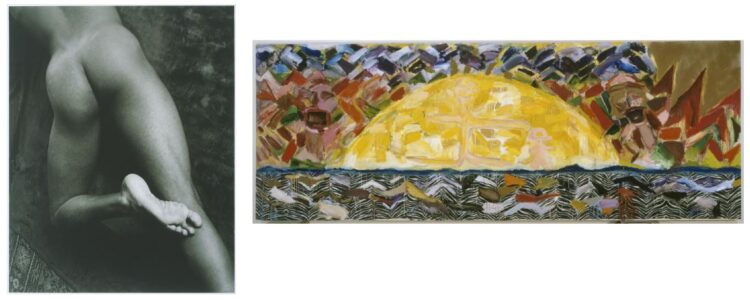🏳️🌈#HappyPride! The Phillips Collection is proud to partner with @samesexinthecity to celebrate, honor, and examine Queer art during #Pride and beyond. Explore a history of LGBTQ identity through art history by pairing artists with this facet of their identity.
What is queer art history? There is no particular style, type, medium, or even definition. Instead, we use it to explore art that speaks to the depths of queer life and experience, culture, and norms. The gift of queerness to art is its refusal to be defined. This resistance to dominant culture, and the way that the codes and cultures of queerness provide creative language and resources for artists, is why queer art is so important for art history and museum collections today. To search for queer art and artists in art history means that we question the divide between “high” and “low” art, between truth and gossip, and between public faces and private lives. In doing this, we are expanding the stories that are housed in our museums and shared with the public.
The Phillips is an institution that has celebrated its untraditional collecting strategies and relationships with artists. Like many other museums in the United States, our permanent collection today features a variety of artists who both identify as gay, lesbian, bisexual, or queer; we also feature artists who thought of their identities in different and complex ways. We have artworks that seem to draw upon queer desire, such as Minor White’s Nude Foot from 1947. Charles DeMuth is known just as much for his still lives and nature scenes (as represented in our collection) as he is for his works depicting sailors or homoerotic settings. There are artists such as Joan Snyder, who expressed her desire not to be defined just as a lesbian or lesbian artist alone, yet who has spoken very clearly about the importance of same-sex desire in her life and artwork. Some contemporary artists such as John Edmonds hope to use their artworks as an “archive and excavation of queer black history.” The Phillips is just at the beginning of its journey to piece together the possible hidden histories of our collection, and we are excited to see what queer history and artists can be excavated!

Left to right: Minor White, Nude Foot, 1947, Gelatin silver print, 10 1/2 x 13 3/4 in., The Phillips Collection, The Dreier Fund for Acquisitions, 2006; Joan Snyder, Savage Dreams, between 1981 and 1982, Oil, acrylic, and fabric on canvas, 66 x 180 in., The Phillips Collection, Gift of Mr. and Mrs. Gifford Phillips in honor of Laughlin Phillips, 1992
